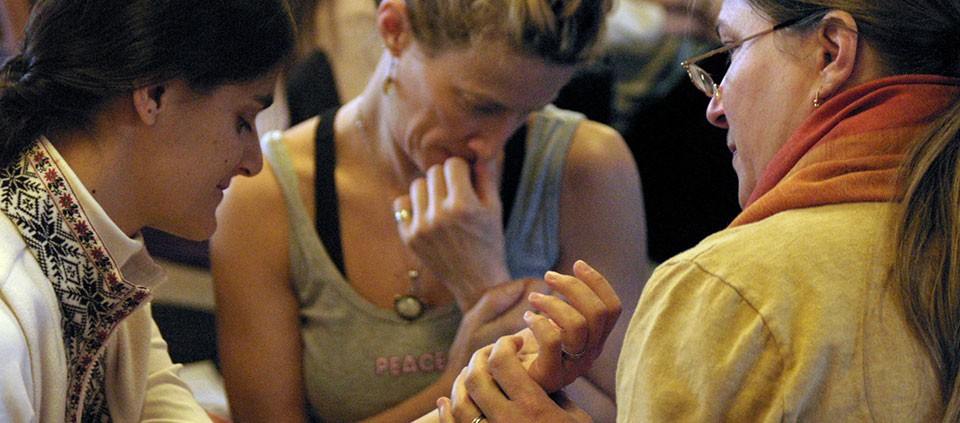Perception and the Senses in Healthcare: Refining Our Ability to Perceive Knowledge

Science and medicine, as well as common sense, recognize that our senses have limitations and can fool us. To circumvent these limitations, we may rely on statistical analyses of large groups of patients and the resulting numerical data to aid in our quest for knowledge. But even then we find it hard to escape the influence of our perceptions on how we design, execute, and implement studies in order to avoid biased results. As we have seen, double-blind studies may not be any less flawed, biased, or limited than our own perceptions.
While it may be hard to avoid limitations in any form of knowledge-gathering, perception is no less a valid form of knowledge than that gleaned from randomized tests or other sources of information. Neuroscientist V. S. Ramachandran, MD, PhD, recounts a story and raises a question. The story goes something like this: I bring you a talking pig. The pig asks after your welfare and what you think of the most recent Red Sox win (I am making up this part).
That’s it. That’s the story.
Not a gripping narrative, but the related question is: Do you need to see 100 or 100,000 more talking pigs to know that one exists? You do not. No more than you need to see the results from 100,000 other people in order to confirm overwhelming empirical evidence provided by the person in front of you.
One of the reasons we need huge studies in the first place is because often effects are so rare that it requires huge numbers of participants to discover statistically significant results. For example, if only three out of 100,000 people might experience a particular benefit or side effect from a given therapy, we would need to study many hundreds of thousands of people to detect that marginally statistically significant benefit or side effect. However, if the results are readily apparent to our perceptions, a small study based on empirical evidence—like a single talking pig—will be sufficient.
When empirical evidence is overwhelming, we do not need teachers or tests to confirm the results. For example, research on the benefits of mostly vegetable diets on heart disease is so conclusive that huge studies are not required. We can also see this evidenced in the origins of now-standard treatments, like the rabies vaccine or the use of extracorporeal membrane oxygenation (ECMO) machines that provide breathing and heart support for infants.
Before 1885, anyone who developed symptoms of rabies died from it. On July 6, 1885, a nine-year-old boy who had been bitten by a rabid dog, and who was at the highest risk for developing symptoms, was treated with a 10-day course of a rabies vaccine developed in Louis Pasteur’s laboratory after extensive testing on animals. The boy survived and lived for many years. Thanks to his and one other case, the empirical results (everyone could see that they survived) were so clear that some three months later, it was decided that the vaccine should be made available for the public. By 1888, 1200 people had used the vaccine, with a mortality rate of one percent. Death by rabies is a fearsome sentence and a gruesome end. Nobody would have been willing to be the one in the study who didn’t get the vaccine.
In a more amusing example, Gordon Smith and Jill Pell wrote a satirical article in 2003 in which they pointed out that the use of parachutes was never subject to a randomized controlled trial. It was sufficient to observe that people without parachutes who survived falls from airplanes were rather thin on the ground.
If we ignore one kind of evidence—say, empirical evidence—in favor of another—say, randomized, double-blind studies—we can pay high costs. Consider this example.
In the 1970s, ECMO was a revolutionary treatment for babies born with immature lungs. Its use substantially reduced infant mortality rates overnight. With such dramatic results, doctors didn’t want to conduct a randomized control trial, especially because the babies in the control groups would almost certainly die. But they felt compelled to conduct such a trial, lest the scientific community ignore their results, claiming there was no large study to validate them. The researchers stopped the trial, however, after the fourth baby in the control group died, while nine out of nine of the babies receiving ECMO survived.
A current example is the rapid rise of fecal transplants or fecal pills to treat Clostridium difficile infection (CDI). This rise is due to a 90 percent success rate. Even though no massive studies have been conducted, results are so conclusive that we are adopting the protocol.
Thomas Hughes, LAc, a friend and colleague of mine, recently observed that we are each living a unique experiment. Since each of us is conceived, formed, born, grown, and nourished in different environments, relationships, foods, qualities, and proclivities, even the medicine most tailored to individuals, cannot perfectly conform to their unique constellation of influences and conditions. Though it is difficult—perhaps impossible—to perceive all these influences and conditions, if we hone our perceptive abilities, we have a better chance of perceiving more of them and matching the appropriate therapy with the patient in front of us.
Our perceptions about this unique, single patient may be more valuable than the results of studies on hundreds of other patients.
Find out about upcoming programs with Claudia Welch at Kripalu.
Excerpted with permission from The Four Qualities of Effective Physicians: Practical Ayurvedic Wisdom for Modern Physicians, by Dr. Claudia Welch, DOM.
Claudia Welch is a Doctor of Oriental Medicine, an Ayurvedic practitioner, and an international speaker who explores how ideas in Eastern medicine apply to today’s reality.
Full Bio and Programs